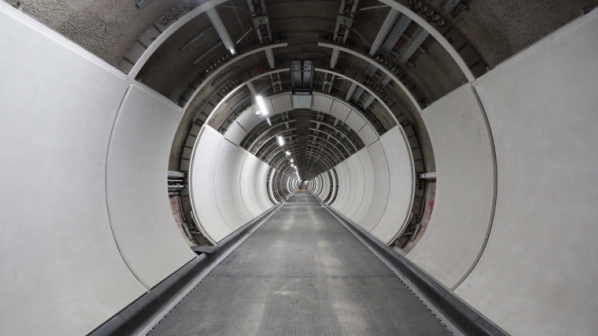The 21km core underground section of Crossrail through central London from Paddington to Stratford and Abbey Wood was due to open in December 2018. However, Crossrail announced on August 31 2018 that opening of the central section would be delayed until autumn 2019, with that date later deferred indefinitely.
Crossrail says that following a detailed audit of the programme, the new leadership team has produced a “robust and realistic” plan to get the project back on track. The new plan required identifying and re-sequencing more than 100,000 interdependent tasks and takes full account of exactly what is to be done and how long it will take.
Crossrail says that as numerous risks and uncertainties remain, it has identified a six-month delivery window between October 2020 and March 2021. The central section between Paddington and Abbey Wood, which will link London’s West End, the City of London, Canary Wharf and southeast London, will initially open with 12 trains per hour during the peak.
It is expected that all stations on the route will open except for Bond Street, which is delayed because of “design and delivery challenges.” Crossrail says it is working closely with the Costain Skanska Joint Venture to ensure the station is ready to open at the earliest opportunity. Once the central section opens, full services across the Elizabeth Line from Reading and Heathrow in the west to Abbey Wood and Shenfield in the east will commence as soon as possible.
Crossrail says that as the completion work proceeds, it will issue regular progress reports and increasingly-specific estimates of when the line will open. The company has also put in place a new visual management system to monitor progress made by contractors and the supply chain to address issues as quickly as possible.
Major tasks
Crossrail has outlined four major tasks:
- build and test the software to integrate the train operating system with three different signalling systems
- install and test vital station systems
- complete installation of the equipment in the tunnels and test communications systems, and
- when completed, trial run the trains over many thousands of kilometres on the completed line to identify any problems and ensure the highest levels of safety and reliability when passenger services begin.
Crossrail says it expects that the remaining fit-out and systems installation in the stations and tunnels will be completed this year. This will allow the new stations and rail infrastructure to be integrated with the rest of the railway. Crossrail also expects that Bombardier and Siemens will complete development of the train and signalling software this year, enabling full testing of the train control system.
It is anticipated that the central section works will be completed within the funding package agreed by the mayor, the Department for Transport (DfT) and Transport for London (TfL) in December 2018. The DfT agreed to provide an additional £590m in July 2018, followed by a further £2.15bn in December 2018. This increased the total cost of the project by 19% from the £14.8bn agreed in 2010 to £17.6bn.
Frustration
“I share the frustration of Londoners that the huge benefits of the Elizabeth Line are not yet with us,” says Crossrail chief executive, Mr Mark Wild. “But this plan allows Crossrail and its contractors to put the project back on track to deliver the Elizabeth Line. Crossrail is an immensely complex project and there will be challenges ahead particularly with the testing of the train and signalling systems but the Elizabeth Line is going to be incredible for London and really will be worth the wait. This new plan will get us there and allow this fantastic new railway to open around the end of next year.”
“Both the Crossrail board and the Crossrail leadership team fully recognise the seriousness of the challenges we face,” says Crossrail chairman, Mr Tony Meggs, who was appointed in December following the resignation of Sir Terry Morgan.
“The Crossrail Board is pleased with the progress by the new Crossrail leadership team to get a grip on the project and pull together a robust and realistic plan to complete the Elizabeth Line. An enhanced governance structure has been put in place to strengthen the Crossrail programme. The Crossrail Board will be holding the leadership team to account as they work to complete the railway. We will be open and transparent about our progress and will be providing Londoners and London businesses with regular updates as we seek to rebuild trust with all our stakeholders.”
Dynamic testing of trains is currently underway in the core tunnels with intensive work to increase the reliability of the train software to enable operation across the three signalling systems on the Elizabeth Line. Trains have been operating at line speed (100km/h) in the central section using the new automatic signalling system, and multi-train testing will begin soon.
For detailed information on rail projects around the world, subscribe to IRJ Pro.
p0976

